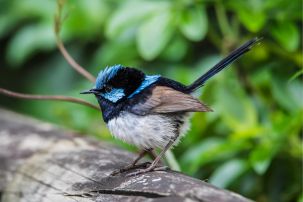Lesson summary
In this activity students complete a survey of the native animals at their school. This lesson includes four activities for gathering survey data and helps students match how various animals use the school grounds. They use indirect and direct observation to survey their school grounds then analysis the results.
Learning intentions:
Students will...
- recognise there are a range of different native animals at their school.
- understand that animals can be identified through the traces they leave behind as well as through visual sitings.
- understand that there are a range of habitat types at their school.
Lesson guides and printables
Lesson details
Curriculum mapping
Australian Curriculum content descriptions:
Science Year 5:
- Living things have structural features and adaptations that help them to survive in their environment (ACSSU043)
Geography Year 5:
- Locate and collect relevant information and data from primary and secondary sources (ACHASSI095)
Science Year 6:
- The growth and survival of living things are affected by the physical conditions of their environment (ACSSU094)
Geography Year 6:
- Locate and collect relevant information and data from primary and secondary sources (ACHASSI123)
Cross curriculum priorities
Sustainability – OI.1 – The biosphere is a dynamic system providing conditions that sustain life on Earth. O1.2 -All life forms, including human life, are connected through ecosystems on which they depend for their wellbeing and survival.
General capabilities: Critical and creative thinking
Syllabus Outcomes: GE3-4, ST3-10LW, ST3-11LW.
Connecting lessons: Biodiversity audit – must be completed as a compulsory action.
Resources required
- Internet access
- Students worksheet
- Collecting jars or plastic petrie dishes
- School ground map (use Google Maps if hard copy unavailable), Scat identification sheet.
- Optional: binoculars
Additional info
This lesson can be used when working on the Biodiversity Module of ResourceSmart AuSSI Vic Certification. By completing this lesson you will have completed the following actions:
Biodiversity Checklist Compulsory Actions:
- A1.1 – Have you identified, monitored and documented the native animals at your school? E.g. using motion-sensing cameras in nesting boxes, visual audits, scat and track identification, bird observations or photo point monitoring?
Checklist data goals:
- No data goals.


Welcome back!
Don't have an account yet?
Log in with:
By signing up to Cool.org you consent and agree to Cool's privacy policy to
store, manage and process your personal information. To read more, please see
our privacy policy here(Opens in new tab).
Create your free Cool.org account.
Many of our resources are free, with an option to upgrade to Cool+ for premium content.
Already have an account?
Sign up with:
By signing up to Cool.org you consent and agree to Cool's privacy policy to
store, manage and process your personal information. To read more, please see
our privacy policy here(Opens in new tab).